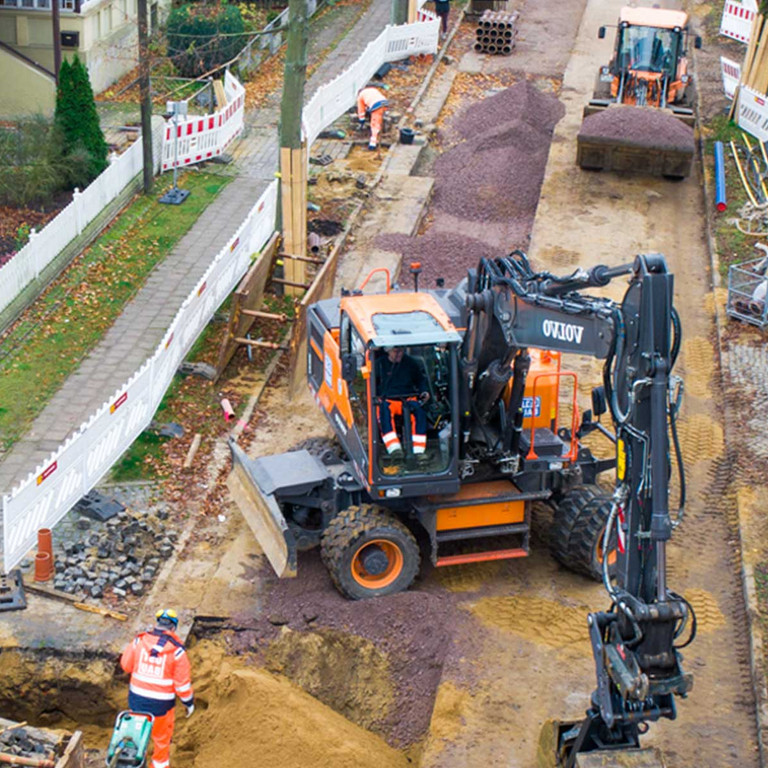SAKRET GmbH
Head of IT, Dr Rolf Stubenrauch describes how smapOne reduces bureaucracy in sales and improves customer service
What specific challenge did you face Dr Stubenrauch?
In the last decade, we have digitalised our company, virtualised IT, partially moved it to the cloud and integrated our value chain using EDI. Previously, the sales force worked exclusively with PC applications, which required a constant connection to our headquarters. Outside on the construction sites, some of our employees were still using paper forms. But who wants to be on the road visiting customers all day and then have to sit behind your computer in the evening dealing with paperwork? At the same time, these forms were an important interface to our customers. After all, this is how we received requests, complaints or suggestions in our organisation.
Our quality management revealed the consequences of this way of working: employees often only wrote down the facts from memory hours after meeting the customer. Disruption in the flow of information, for example, due to the use of digital cameras to make photos, made it cumbersome to aggregate and forward data. This has resulted in poor data quality and information that is often difficult for office staff to understand and, in turn, processing times that were far too long.
Our problem was that the processes in direct customer contact could not be digitalised on mobile devices at all or only with extreme difficulty. Established software solutions lacked the necessary flexibility, and in-house development was too lengthy and expensive. The turnaround brought a recommendation from our bank, which presented smapOne to us at a regional start-up event. In the following months, we were able to digitalise manual processes pragmatically and extremely quickly using self-developed mobile apps.
What are your solutions?
Today, our sales staff can fill out the complaint form directly on the construction site, on their iPad or smartphone. With the app, users can not only enter text, but also attach photos. The customer then signs the complete documentation on the touch screen. The entire process has been digitalised. This allows sales staff to send the complaint form from the app as a PDF to the office staff without delay. When they leave the construction site, they will have already completed their office work, and they can devote their full attention to the next customer.
We have also developed a second app based on the complaints app. After all, not every suggestion is a complaint. Customers often describe their valuable experience with the quality or processing properties of our products. It's about learning from the experience of our customers and fulfilling their requests. This is now managed by our market monitoring app. And again, our sales staff records such customer information directly on site and forwards it digitally, this time to our product development team.
With the help of a third app, we were finally able to simplify a process that was conducted verbally before: until then, appointments for the collection of building material silos were arranged by telephone or directly at the construction site. The coordination makes it difficult for us to honour a specific collection date, as the project phases on a construction site are sometimes tightly scheduled. Today, the sales staff can document the condition of the silo on the construction site, have their report acknowledged by the customer and send the collection date request as a digital form to the office staff, who immediately handle the request. The customer benefits from a punctual service. We benefit from complete documentation.
What has improved?
Today, all information from the apps converges digitally in the smapOne database. As a result, we benefit from a completely new data quality at the interface to the customer. We were able to reduce the administrative expenses for our sales force, the loss of information between the construction site and the office staff as well as the throughput times for the subsequent processing to a minimum. Most importantly though, our communication has improved considerably. Today, our customers receive timely feedback on their enquiries.
These are the main benefits that mobile apps offer us. There is another point that matters from the long-term perspective: thanks to the modular app structure of smapOne, we, as a medium-sized company are in the position to develop digital solutions cost-effectively, quickly and, above all, ourselves. On this basis, we become more agile in our response to customer requests, i.e. to our market. This is why the smapOne technology also optimally supports our quality management, which receives valid data and is in the position to implement problem solutions pragmatically.
How did the integration succeed?
The biggest surprise was that the development time for the app was just 30 minutes, with another 30 minutes needed for each data field connected to an external business application. It took less than a half day's work! This is a almost ridiculous when you consider that the in-house development of software or apps typically takes several months. Project representatives from the specialist departments can put together the app themselves. The graphical modular structure of smapOne makes coding largely superfluous.
As smapOne is platform-independent, the roll-out of the apps to the various end devices is also straightforward. Today, we are able to launch new apps in the organisation within a month. We present prototypes in the teams and incorporate the feedback of the employees. The staff's acceptance of the new apps is positive across the board. Because smapOne is user-friendly, a one-page quick start guide is typically sufficient. In addition, we offer support if employees still need help.
What are the next steps?
The next apps are already being implemented. In future, sales will be able to request special rates from the back office on the construction site, including all the data needed to prepare a meaningful quote. When the expertise of a technical specialist is needed on site, for example, colleagues will soon be able to order an application technology consultation through the app.
Today, many of these ideas come directly from the specialist departments. For example, smapOne's no-code approach is changing the division of labour in terms of digitalisation. IT and quality management only support and take care of the technical roll-out. Finally, our employees can use digital technology to solve problems where they arise. This is extremely effective and pragmatic.






